What an exotic choice for your next pet! Peacocks are graceful and amazing animals. With their bright, shiny feathers of emerald green and sapphire blue, they look like something out of a movie or design magazine.
I always thought peacocks would be rare and hard to come by, or at least hard to find here in the U.S. However, I’ve been shocked recently at how often I come across peacocks strolling across neighborhood streets or in people’s yards.
Don’t be surprised if you spot a peacock while you’re out exploring. In some places, they live in groups.
People keep them as pets to beautify their yards or landscaping. There are also wild peacocks that are comfortable around humans and roam around looking for food in public places.
They’re fast enough to run away if you get too close, but most peacocks you encounter will be just fine if you stand at a distance to take a picture or stare at them for a bit.
They might turn and take a few steps away, but they don’t scare all that easily if they’ve been around people long enough.
A lot of people are surprised to hear that peacocks are a common pet. Sure, they’re not as common as a cat or a dog, but peacock pets aren’t all that rare.
Having pet peacocks is actually a great idea for folks who want something a bit more exotic. They’re easier to keep than many other types of birds because they can’t fly away, and you don’t have to keep them in a cage in the house.
Or perhaps you have a farm or are developing a farm. You have chickens and maybe goats, and you think it would be fun to have a peacock around the place. It’s just another bird, right?
Maybe you have found stray peacocks in your area, and you want to shelter them.
Peacocks are not native to the U.S. They were originally brought over from places such as India and Sri Lanka by the wealthy for private zoos and such. At some point, they escaped and now can be found around America, from California to Texas to Florida.
Although peacocks have been around long enough to adapt to the U.S. climates, they still may struggle to provide for themselves.
Perhaps you’ve befriended a peacock or a pride of peacocks and are considering taking them in, allowing them to live in your yard. Whatever your reason, you’re interested in housing peacocks either as pets or as a service to them.
Can peacocks be kept as pets? You can keep peacocks as a pet on your property. They aren’t hard to care for, and they’re resilient animals. Let’s explore what you need to know about housing peacocks and where to start.
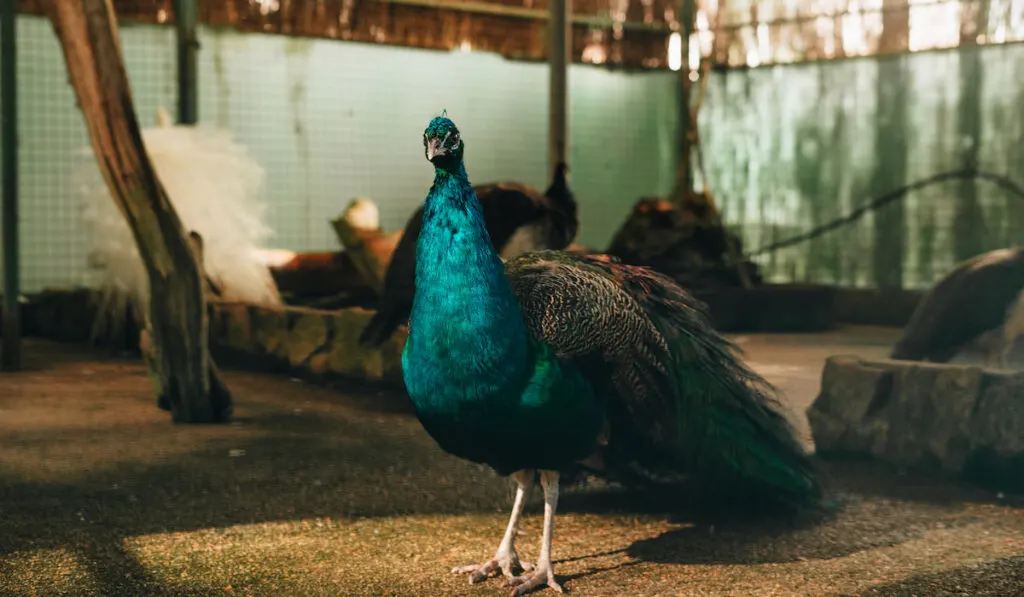
Table of Contents
Before You Commit to Housing a Peacock
Peacocks can be legally kept as pets in the U.S. However, before you go ahead and adopt one, make sure to check your local laws. Some places have restrictions on peacocks because they make noise and are a potential traffic hazard.
You’ll want to make sure you aren’t breaking any rules or laws before you start spending money on peacock supplies.
You may also want to consider your living situation. Peacocks need a large space to roam in. If they live in small cages, they will become stressed and can cause themselves harm.
If you live in an apartment or townhome with little or no yard space, owning a peacock is probably not a great idea.
A pet peacock may also not be the best idea if you live in a suburban area – your neighbors may hate your pet! Peacocks don’t fly, but they still can get over tall fences, as much as you may think otherwise. Because they can get over fences, they can get into your neighbors’ yards and wreak havoc on their property.
Peacocks are not like domestic pets, such as cats and dogs, that will stay at your home if you take good care of them. Peacocks do not get as attached to their owners. If there is a better food source or living situation somewhere else, the peacock will abandon you in the blink of an eye.
During mating season, peacocks will emit very loud and shrill cries to get the attention of other peacocks. Although this may not bother you, it could be an annoyance to a next-door neighbor who just wants peace and quiet.
Therefore, the best-case scenario for adopting a peacock would be keeping them on a farm or somewhere with a large amount of land and with much more space between neighbors than in a typical suburban neighborhood.
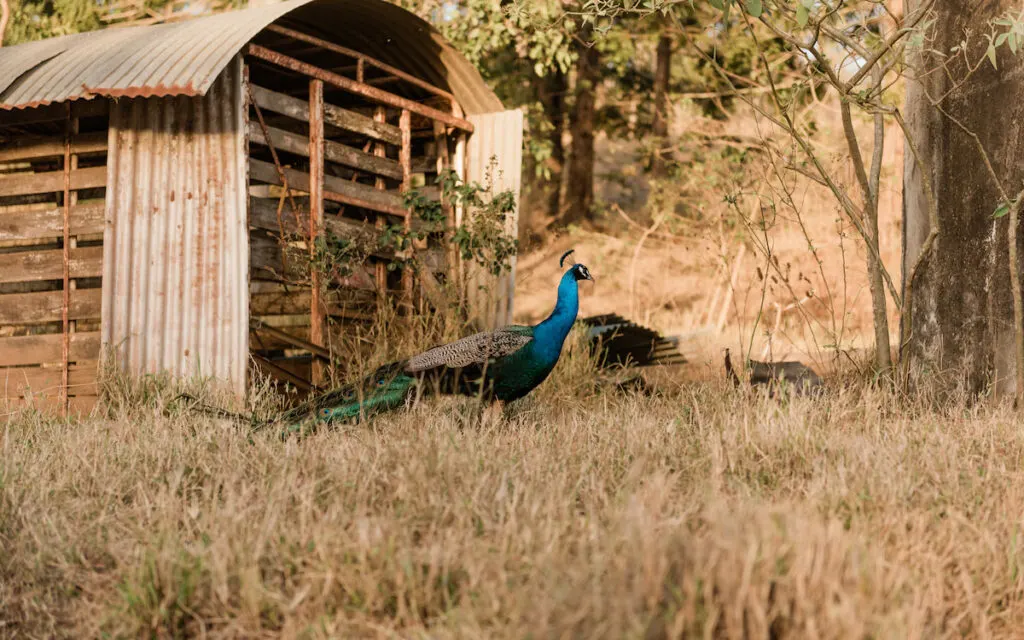
Peacocks, Peahens, and Peafowl
Here’s a fun fact for you peacock-lovers: Only males are considered “peacocks”!
Females are known as “peahens.” In general, instead of calling them “peacocks,” refer to them as “peafowl.” When describing a group of peafowl, they can be called a pride, a party, a muster, or an ostentation of peacocks.
Peacocks are known for their bright and bold feather colors. The most common peacock is a deep green and blue color, with a large, bushy tail of multicolored feathers that look like they have eyes on the ends. These impressive displays of color and pattern are used to attract females for mating.
Peahens choose their mate. They’re not the ones doing the attracting, so they are not as colorful as peacocks. Instead, peahens are typically a brown color in their feathering, possibly with the jade-green feathering on just their heads.
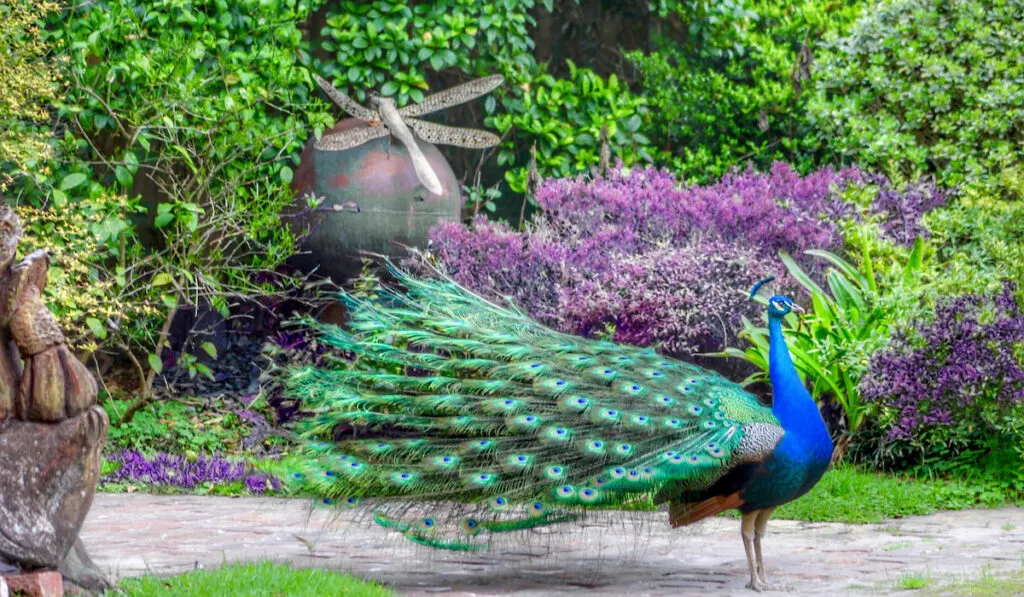
Should You Just Get One Peafowl, or Do They Need to Be Kept in Groups?
Peafowls are happiest when in groups. Peafowls interact well with other bird species, such as turkeys, geese, and chickens. If you are a farmer, you don’t need to worry about them getting lonely if you have some other birds for them to live and interact with.
However, if you don’t own any chickens or other types of birds, peafowls don’t do well alone. You’d want to get a couple of other peafowls so they don’t get lonely.
Peacocks tend to get territorial and compete with other males for leadership of the pride, especially over any females that may be with them. The best choice would probably be to get one peacock and have the rest be peahens, as peahens are peaceful when living with males and females.
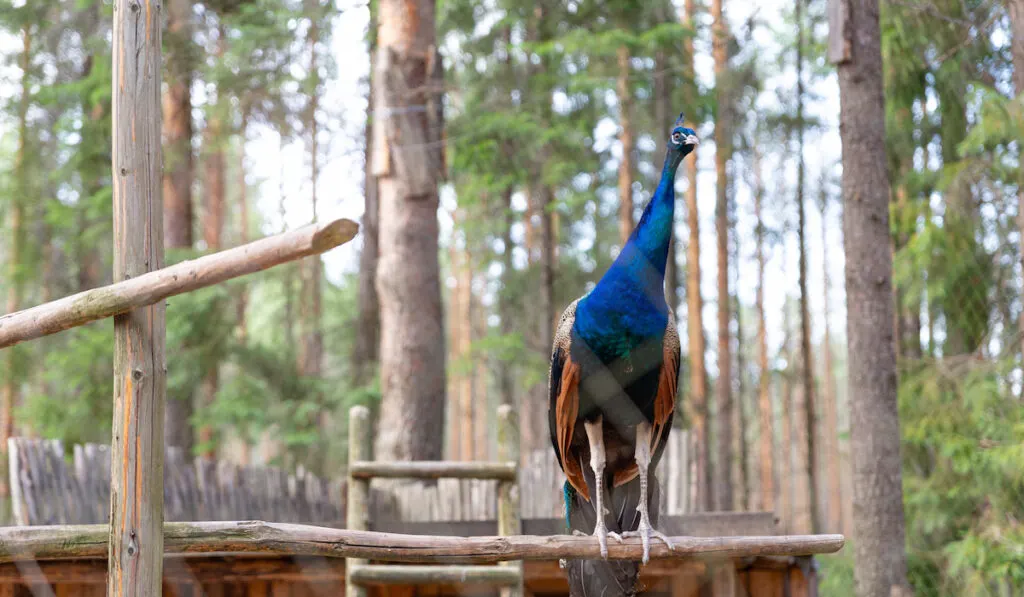
Getting Housing Right
Where should you keep your peafowl?
Peafowl are large, free-range birds who need a big plot of land to live on. They are popular on farms and can live in an amusement park because they need a large amount of space to roam.
If you shut peafowl in a small pen, they’ll get depressed or stressed out and possibly harm themselves when trying to escape.
A rural area with a large plot of land is the best place to keep a peafowl. Space gives the birds the freedom to roam long distances.
However, if you live in an area with predators that could attack this large, semi-flightless, unsuspecting bird, you may want to keep them in a big pen.
Make sure the pen is sufficiently large, at least the size of a shed or greenhouse so that the peafowl has plenty of space to move around. If you have more than one peafowl, you’ll want to increase the space, just like you increase the volume of a fish tank when you add more fish.
Whether your peafowl are free-range or in a pen for most of the time, they’ll need a covered shelter to sit under in extreme heat, rain, or other bad weather. Ensure the shelter you construct is large enough for the peafowl to fit in, or else they will feel too constricted and won’t go in!
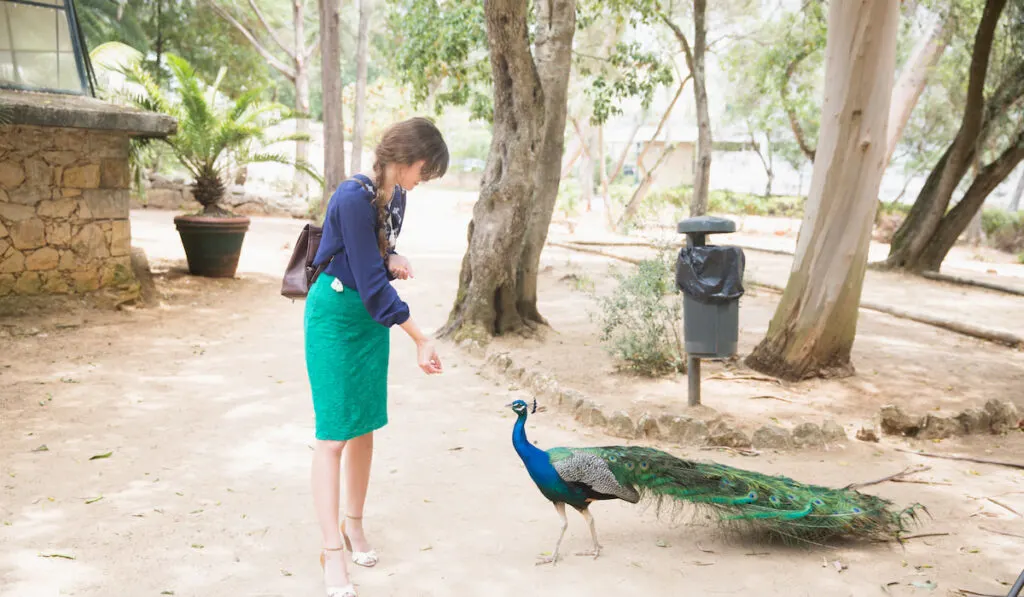
Feeding Your Peafowl
What do peacocks eat to look so good? Peafowls are omnivores and will eat almost anything. (This does not mean you should feed them any random thing you find, but they aren’t picky.)
Peafowls need to consume a large amount of protein in their diet to grow, keep up their health, and maintain the bright, gorgeous feathers they are so famous for. Giving them constant access to fresh water is also essential.
You can feed your peafowls a mix of vegetables, grains, or chicken feed, along with a meatier, protein-rich option.
These protein sources often come from grubs, worms, and bugs, which the birds themselves can often find when they are roaming your property. Therefore, having an open space where your peafowl can freely and safely roam is highly recommended!
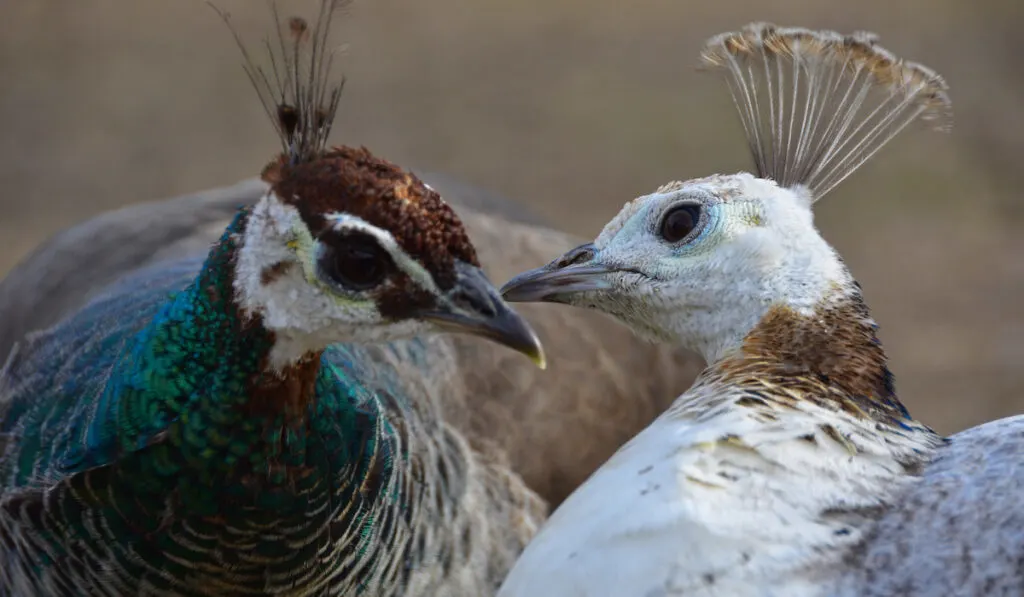
How to Help Them Adjust to a New Home
The easiest age to train a peafowl is when they are almost at maturity. Babies are too young to learn, and when they are full-grown, they are too old to change habits.
Have you ever heard the phrase, “can’t teach an old dog new tricks”? Technically, you can, but it’s much more challenging. So, it is better to adopt a yearling.
A yearling is still young, which is better for learning, but is big enough that it can withstand all types of weather and be safe around small predators such as dogs and cats.
After you’ve adopted your peafowl, get them used to their environment. Keep them enclosed in their covered shelter by installing a temporary flight pen around it. This way, they can get used to their new home without running the risk of escaping.
Bring them food and water every day to get them accustomed to seeing you and associating you with the positive trait of providing meals! Typically, you’ll want to have them adjust for about a month before moving on to the next stage.
After a month, clip their wings before letting them out of their enclosure. They won’t be able to fly very far with clipped wings, and that fact will often calm them down and make them easier to train.
Next, open the enclosure and allow them to decide to leave themselves – don’t force them! Let them free range for a while, but ensure they’re back in their enclosure before nightfall.
Repeat this every day, letting them stay out for longer and longer. You’ll want to keep doing this for several months until their clipped wings grow back and they can protect themselves from predators. Then you can trust them to wander without running off.
After that, they can be as free-range as you’d like!
And there you go, the ultimate guide to housing peacocks. We hope you enjoy raising these beautiful birds!
